All products featured are independently chosen by us. However, SoundGuys may receive a commission on orders placed through its retail links. See our ethics statement.
JBL Flip 7 vs Sony ULT Field 1: Battle of the portable speakers
Published onApril 10, 2025


Portable Bluetooth speakers continue to be essential companions for outdoor adventures, and two popular options have recently hit the market: the new JBL Flip 7 and the Sony ULT Field 1. Both offer rugged designs for outdoor use, but they take different approaches to sound customization and connectivity. Let’s break down how these two portable powerhouses compare, helping you decide which deserves a spot in your backpack.
Editor’s note: this article was published on April 10, 2025, and is the first version of the article. Updates will follow as the market changes.
What’s it like to use the JBL Flip 7 compared to the Sony ULT Field 1?
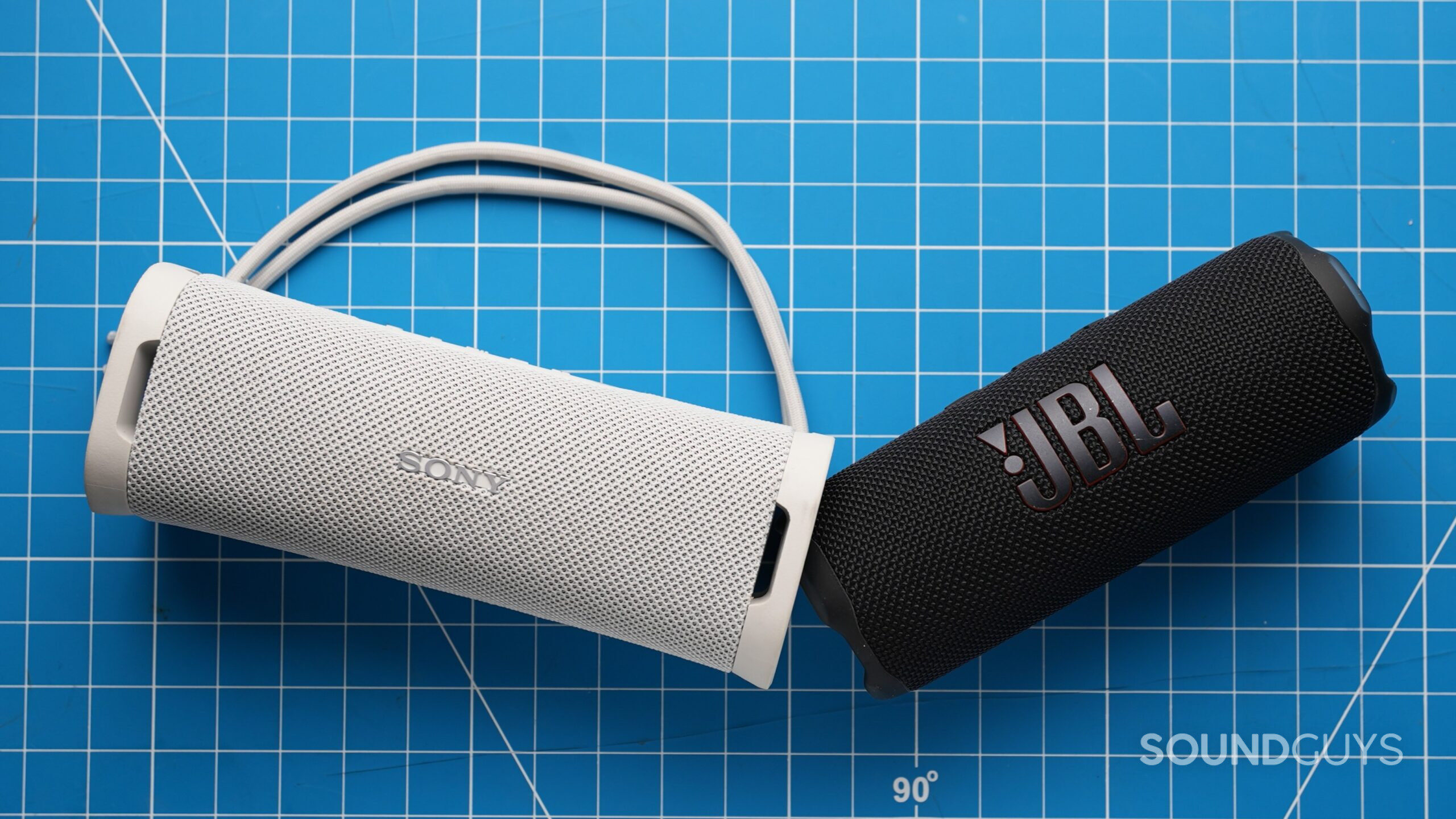
The JBL Flip 7 maintains the familiar cylindrical design of the Flip series, with reinforced rubber bumpers protecting its passive radiators. It’s slightly lighter and more compact than the Sony ULT Field 1, but both will fit comfortably inside a bag or backpack.
Both speakers prioritize durability with impressive weather and impact resistance. The Flip 7 boasts an IP68 rating (dust-proof and water-resistant up to 1.5m for 30 minutes) and is drop-proof from 1 meter onto concrete. The ULT Field 1 offers an IP67 rating (dust-proof and water-resistant up to 1m for 30 minutes) and is shock-proof from 1.22m (4 feet) onto surfaces no harder than plywood.
For portability, each speaker takes a slightly different approach. The Flip 7 features a new “PushLock” system with a carabiner and loop attachment, allowing you to secure it to a backpack or hang it from a tree branch. The ULT Field 1 comes with an adjustable rope handle that serves a similar purpose but with less security than a carabiner, as you will have to tie and untie it.
One notable difference is the finish. The JBL Flip 7 maintains the durable fabric covering seen in previous models, while the Sony ULT Field 1 has a cloth finish that can get dirty quickly. If you’re planning on rugged outdoor use, Sony’s black, forest gray, or orange options might be more practical than the white.
How do you control the JBL Flip 7 and Sony ULT Field 1?
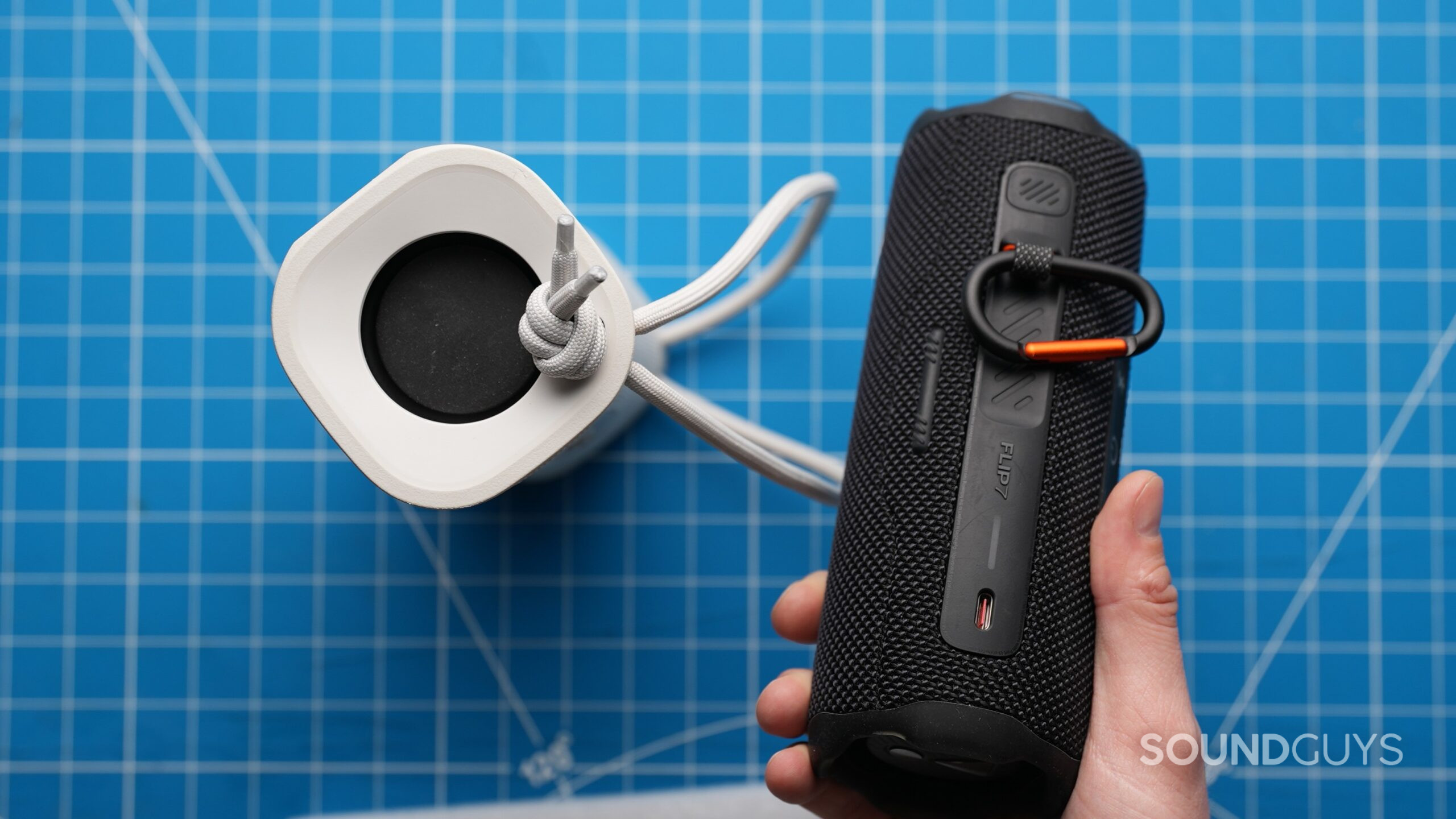
The JBL Flip 7’s controls are arranged in two sections on the top of the enclosure. It features standard playback controls (play/pause, volume +/-) along with power and Bluetooth buttons. The Flip 7 also replaces the previous generation’s Party Boost button with an Auracast button for connecting with other JBL Auracast-supported speakers.
JBL Flip 7 controls
| Action | Power button | Bluetooth button | Auracast button | Play button | Volume + | Volume - |
|---|---|---|---|---|---|---|
| Action Press 1x | Power button Turn on device | Bluetooth button Enter pairing mode | Auracast button Connect with other JBL Auracast supported speakers | Play button Play / Pause | Volume + Volume up | Volume - Volume down |
| Action Press 2x | Power button | Bluetooth button | Auracast button | Play button Next track | Volume + | Volume - |
| Action Press 3x | Power button | Bluetooth button | Auracast button | Play button Previous track | Volume + | Volume - |
| Action Press and hold | Power button | Bluetooth button | Auracast button | Play button Engage audio over USB (while inserting the cable at the same time) | Volume + | Volume - |
The Sony ULT Field 1 has a silicone control strip along the top with a power button, Bluetooth button, play/pause button (which also handles calls), volume controls, and a dedicated ULT button that activates Sony’s bass enhancement mode. The ULT button is backlit when engaged, and the power and Bluetooth buttons show green lights when active.
Sony ULT Field 1 controls:
| Action | Power button | Bluetooth button | Play / Pause | Volume - | Volume + | ULT button |
|---|---|---|---|---|---|---|
| Action Press once | Power button Power on/off | Bluetooth button Enter pairing mode | Play / Pause Play / Pause / Answer/ End Call | Volume - Volume - | Volume + Volume + | ULT button Engage ULT boost |
The Flip 7 offers more playback control, including the ability to skip tracks, while the ULT Field 1 provides call-handling functionality that the JBL lacks entirely.
Should you use the apps of either JBL Flip 7 or Sony ULT Field 1?
Yes, but the JBL Portable app offers significantly more value than Sony’s Music Center app.
The JBL Portable app provides a 7-band customizable EQ for the Flip 7, a substantial upgrade from the previous generation’s 3-band EQ. This allows for more precise sound tailoring. The app also includes four EQ presets, the ability to pair two Flip 7s for stereo playback, and management of Auracast-connected speakers via the “Party Together” section. Additionally, it offers a “PlayTime Boost” feature that can extend battery life by two hours (though at the cost of bass response).
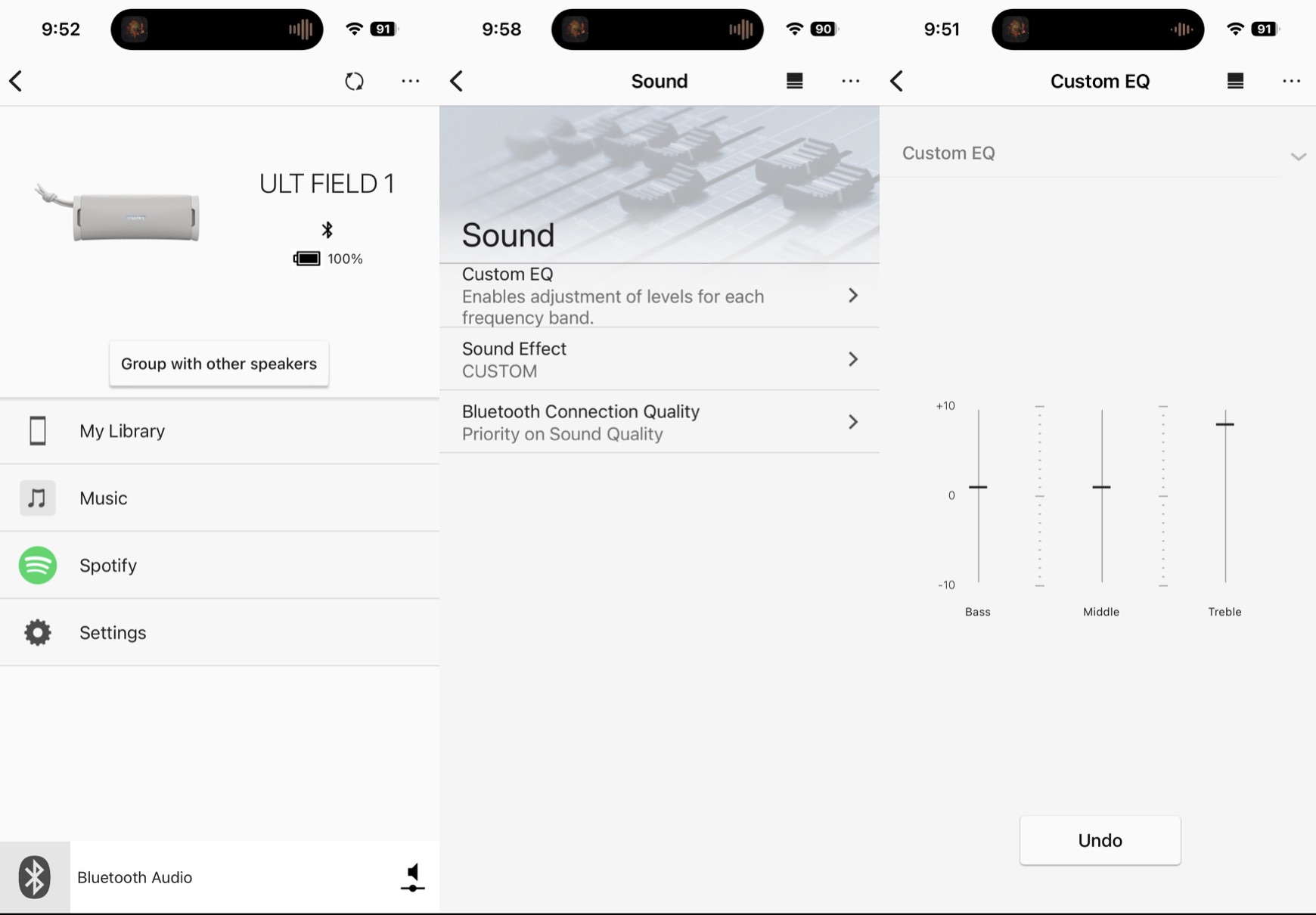
The Sony Music Center app for the ULT Field 1 is, to put it lightly, lackluster. It offers only a minimal 3-band graphic EQ, which cannot be used simultaneously with the ULT sound mode—you must choose one or the other. The app does allow for firmware updates and can pair two ULT Field 1 speakers for stereo sound. It also provides a connection setting option to prioritize either sound quality or connection stability.
For those who value sound customization, the JBL Portable app is clearly superior, providing more control and features than Sony’s offering.
How do the JBL Flip 7 and Sony ULT Field 1 connect?
Both speakers offer Bluetooth connectivity, but the JBL Flip 7 provides more options.
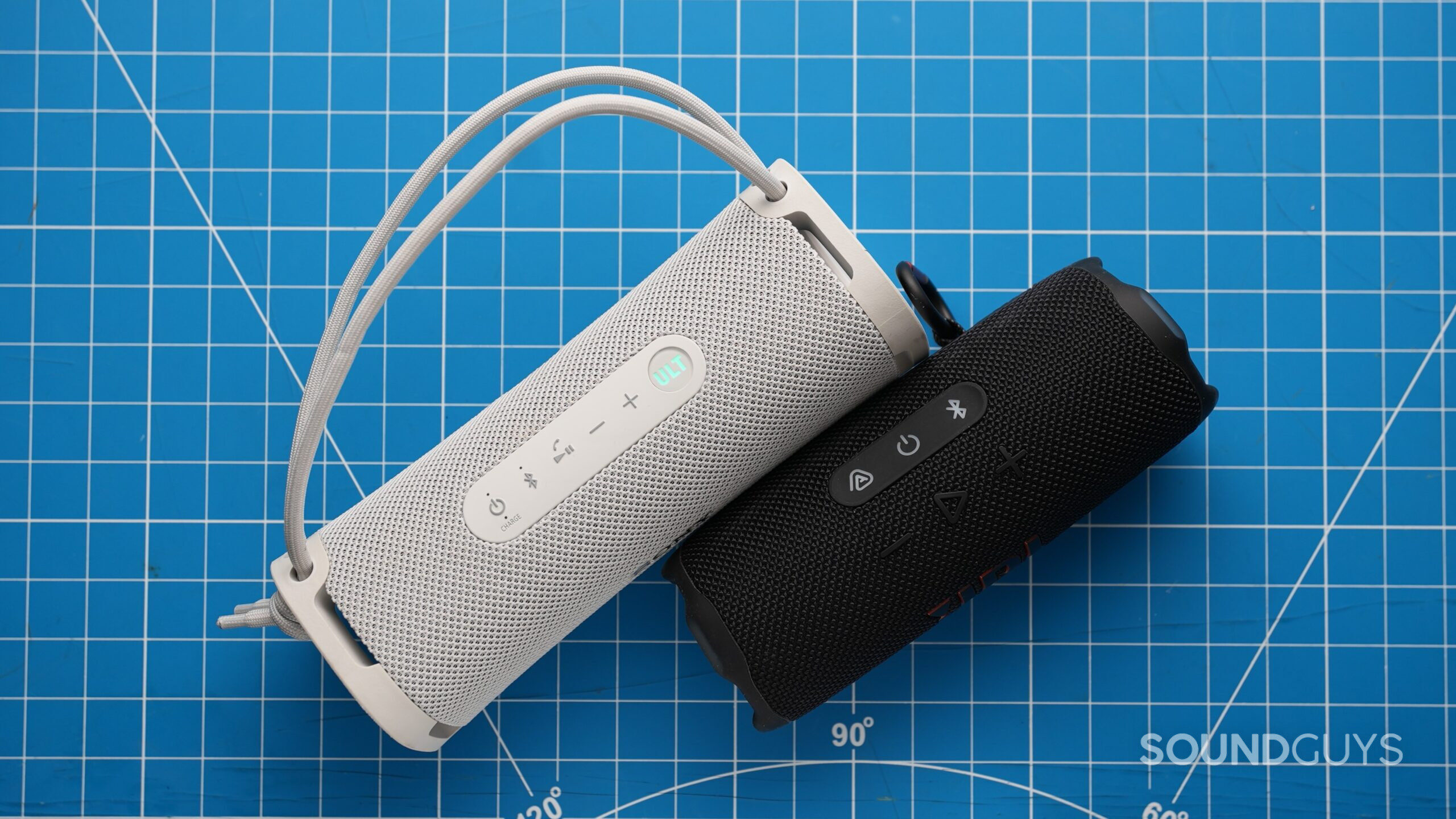
The Flip 7 connects wirelessly using Bluetooth 5.4, an upgrade from the previous generation’s Bluetooth 5.1. It also supports audio over USB-C, including lossless playback from compatible services like Apple Music or Tidal. This gives it an edge for users who prioritize sound quality and want a wired option.
The Sony ULT Field 1 uses Bluetooth 5.3 and supports only the SBC and AAC codecs. It does not offer a wired connection option, but its app offers a unique feature: the ability to choose between “Priority on Sound Quality” (which uses SBC or AAC) or “Priority on Stable Connection” (which defaults to SBC).
Is battery life better on the JBL Flip 7 or Sony ULT Field 1?
The Sony ULT Field 1 offers significantly better battery life than the JBL Flip 7.
Under normal operation, the JBL Flip 7 provides 14 hours of playback, which can be extended to 16 hours using the “PlayTime Boost” feature (which reduces bass frequencies).
In contrast, the Sony ULT Field 1 advertises 12 hours with ULT mode engaged, but testing revealed it can provide a remarkable 28 hours and 45 minutes of playback with ULT off—more than double the Flip 7’s maximum runtime. The ULT Field 1 also has quick charging to provide an additional 3 hours of playback from a 10-minute charge.
Does the JBL Flip 7 sound better than the Sony ULT Field 1?
Based on the MDAQS (Multi-Dimensional Audio Quality Score) ratings in the reviews, the JBL Flip 7 scores slightly lower than the Sony ULT Field 1 when Sony’s ULT mode is engaged.
The JBL Flip 7 received an Overall MDAQS score of 2.8, with a Timbre score of 3.0, a Distortion score of 3.5, and an Immersiveness score of 1.9. The Sony ULT Field 1 in its default mode scored only 2.1 Overall, but with ULT mode engaged, it jumped to 3.1 Overall, with a Timbre score of 3.4, a Distortion score of 3.2, and an Immersiveness score of 2.4.
Both speakers offer mono sound, but the JBL Flip 7’s new 7-band EQ allows for more customization. By reducing the 1kHz slider and boosting both low and high frequencies, we could achieve our preferred sound profile for various music genres.
The Sony ULT Field 1 sounds thin without the ULT feature engaged, but pressing the ULT button adds substantial bass that improves the listening experience. However, its 3-band EQ is limited and cannot be used simultaneously with the ULT mode.
Sound modes: ULT vs. PlayTime Boost
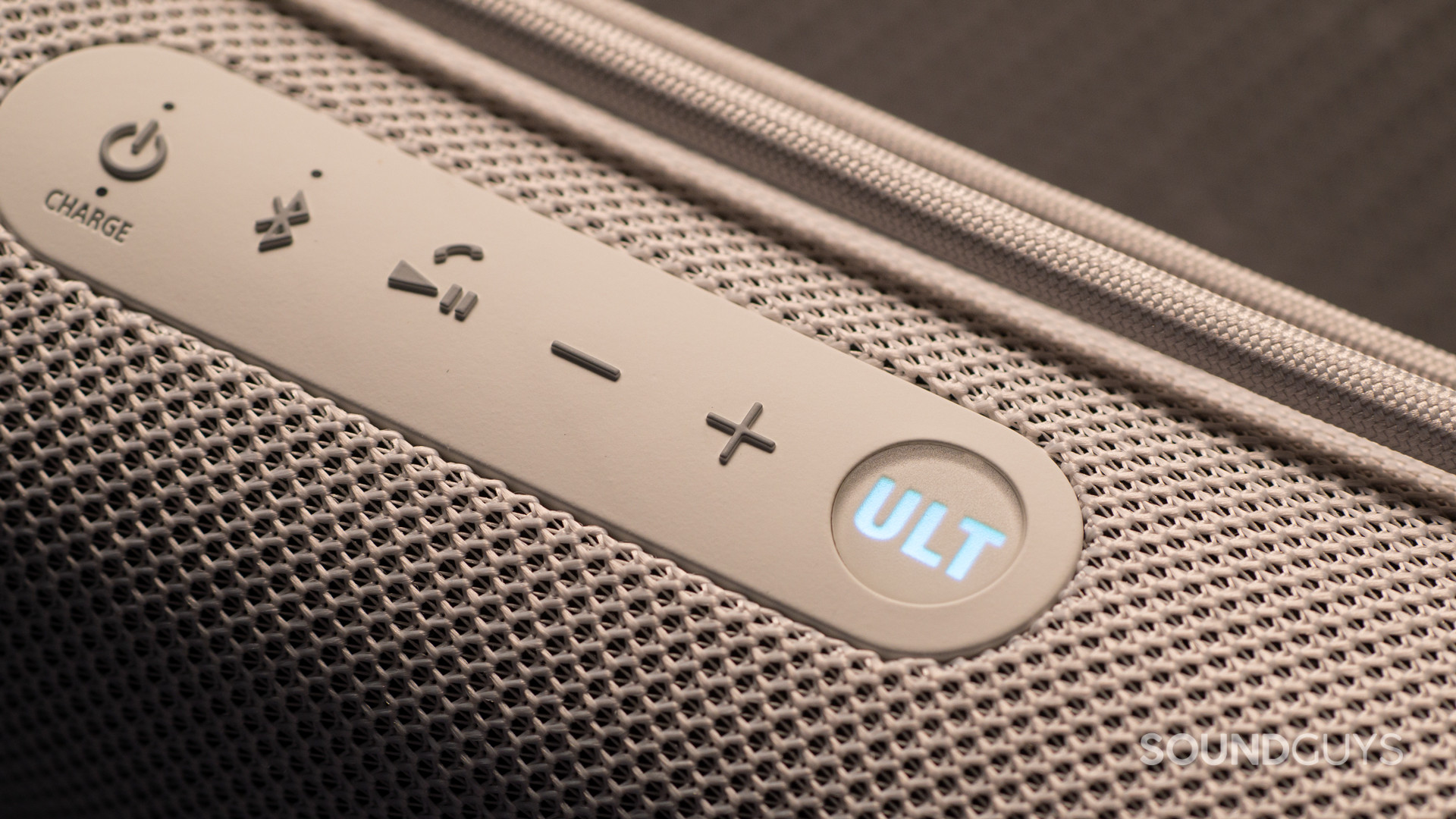
The Sony ULT Field 1’s ULT mode enhances bass response, improving the overall listening experience at the cost of reduced battery life (dropping from nearly 29 hours to 12 hours). When engaged, it significantly improves the speaker’s MDAQS scores, particularly in Timbre and Immersiveness.
The JBL Flip 7’s PlayTime Boost does the opposite—it extends battery life by reducing bass frequencies, essentially functioning as a bass-cutting EQ preset. This extends playback time from 14 to 16 hours but, according to the reviewer, results in a sound that’s “heavy on the mid-range and treble” and “not great” for music enjoyment.
Sony’s approach prioritizes sound quality enhancement at the expense of battery life, while JBL offers a way to extend already-decent battery life at the expense of sound quality.
Should you get the JBL Flip 7 or Sony ULT Field 1?
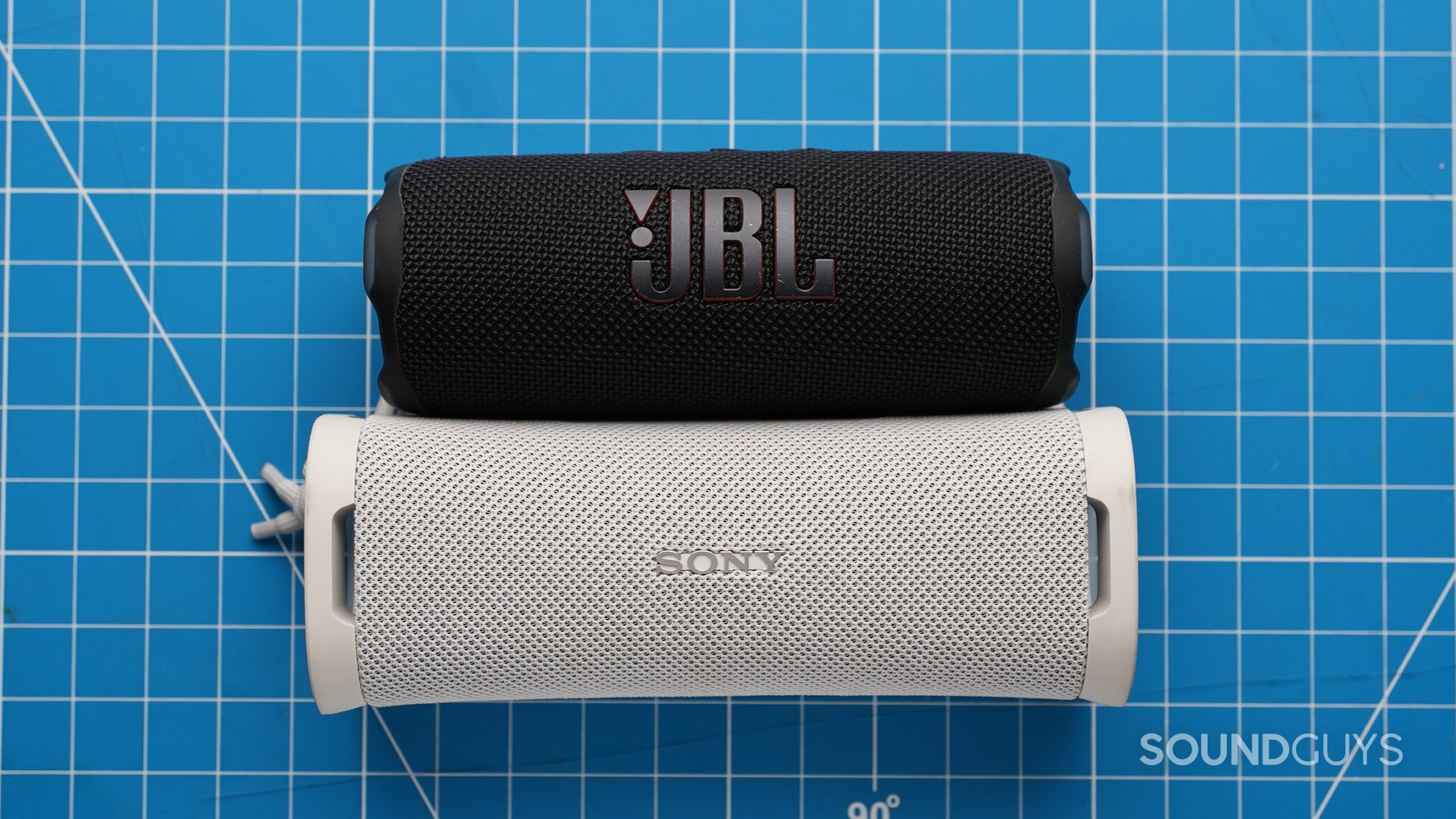
Choose the JBL Flip 7 if:
- You value sound customization (7-band EQ)
- You want lossless audio via USB-C
- You already own or plan to buy other JBL Auracast-compatible speakers
- You want a carabiner attachment for secure transportation
Choose the Sony ULT Field 1 if:
- Battery life is your top priority
- You like a lot of bass
- You need to take calls with a speaker
- You want a lighter hit to your wallet
Both Bluetooth speakers offer similar durability specifications and core functionality, making either a solid choice for casual outdoor use. The JBL Flip 7 provides more features and connectivity options at a slightly higher price point, while the Sony ULT Field 1 excels in battery life and simplicity.
What should you get instead of the JBL Flip 7 and Sony ULT Field 1?
- Anker Soundcore Motion 300 ($79.99 at Amazon): It’s easy to find a home in the wild for this speaker. For less outlay while keeping things portable and durable, the Soundcore Motion 300 is worth a look.
- The new JBL Charge 6 offers more output but in a bigger package. If you need more power and bass response, consider the new JBL Charge 6 with the same 7-band EQ and lossless audio over USB for $199 at Amazon
- Save a few bucks with the Anker Soundcore Boom 2, featuring built-in LED lights on its passive radiators and a courtesy USB-A port for $89.99 at Amazon